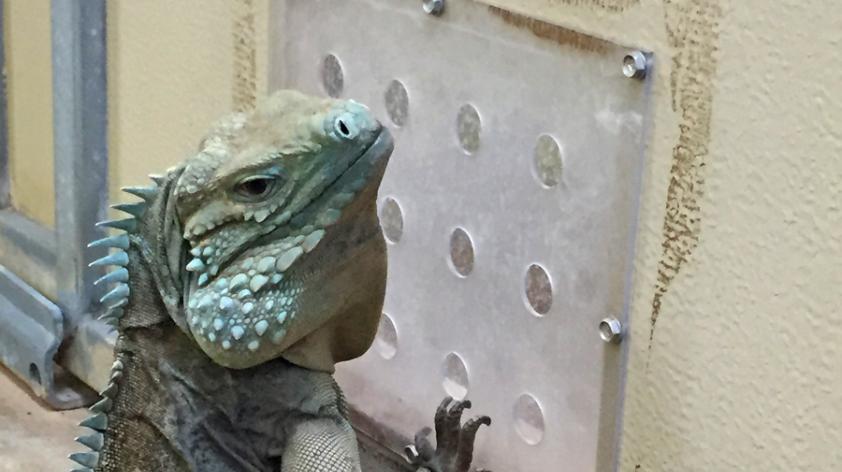
Howdy, neighbor!
One of my main duties at the Institute for Conservation Research is managing the daily operations and husbandry of animals at the Griffin Reptile Conservation Center (GRCC). This off-display facility at the Safari Park was built specifically for researching and ultimately maximizing the reproductive success of the critically endangered West Indian rock iguanas (belonging to the genus Cyclura).
Currently, we house the three most-endangered species of lizards at the center: the Jamaican iguana, the Grand Cayman blue iguana and the Anegada Island iguana and we are proud to say that we are the only facility in the world to have successfully bred all three of these iconic species. The role of North American zoos is to manage these zoo based species in order to produce ‘safety net’ populations in case there is a need to reintroduce any of them back into the wild. A strict studbook determines which animals are allowed to produce offspring together therein keeping a healthy and genetically diverse captive population. Typically after two iguanas have bred together and produced offspring for more than a few years the pairs are separated and we must then find new mates for each animal. This is where things become tricky. Iguanas are social animals and often form pair bonds although males generally breed with as many females as they can.
The problem we have encountered in the last couple of years is that the females are not tolerating their new males which has resulted in clutches of infertile eggs or no eggs at all. Besides daily cleaning, feeding, record-keeping, facility enhancements, enrichment and any number of other things a keeper may need to accomplish on a given day, problems such as mate incompatibility presents yet another challenge to overcome.
“Howdy doors” have been a useful tool for zoos that allow future mates to get to know one another without actually being in contact. Animal introductions can become violent at times so any chance to diffuse an aggressive situation is gladly taken by keepers for many species. The doors are typically see-through and often have holes in them so that animals can not only see but also smell one another. Over the winter of 2017 we have installed howdy doors in all of our enclosures at the GRCC. We are currently studying mate choice and whether or not allowing visual and olfactory access to potential mates prior to introduction has an effect on breeding success in our iguanas.
Our newly-installed camera system is enabling us to record behaviors we would not normally be able to document under the watchful eyes of the iguanas and also allows us to document nesting behaviors more efficiently. If all goes well, we hope to have some baby iguanas by late summer – we’ll keep you posted!













